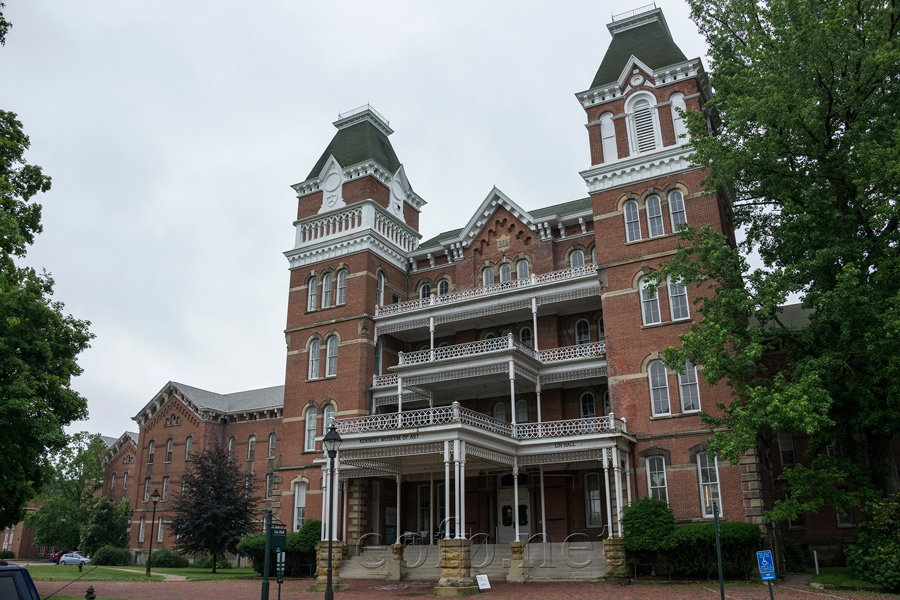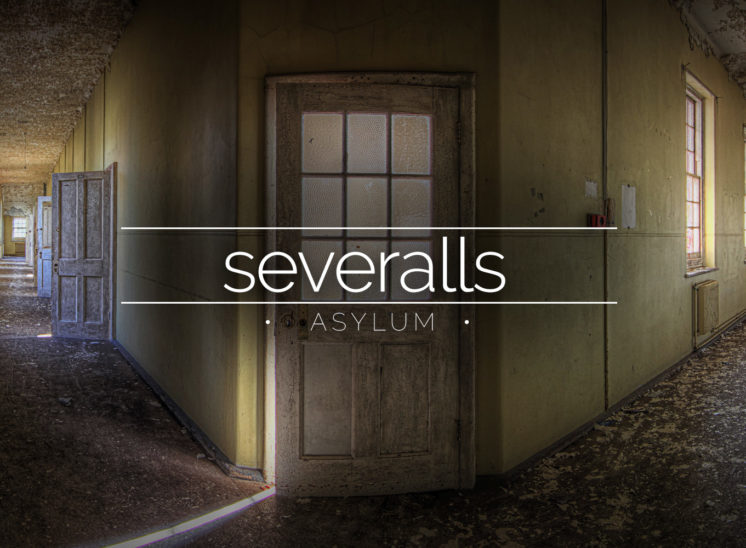
What is the history of Camberwell asylum?
Camberwell House opened in 1846. John Hayball Paul (1816–1899) was the medical superintendent from its opening until 1899. The Asylum was a Metropolitan Licenced House. The proprietors were Aubin & Co; Mr Paul, Mr F G Aubin and Mr Alfred Richards. It was the last asylum to be given a license to house paupers.
Are there any records of lunatic asylums in the UK?
Lunatic asylums were first established in Britain in the mid-19th century. Records of lunatic asylums are not held in any one place and often not all their records have survived. Many records of asylums, prisons and houses of correction are kept in local archives and especially those of the patients and inmates.
Who were the proprietors of the asylum in London?
The Asylum was a Metropolitan Licenced House. The proprietors were Aubin & Co; Mr Paul, Mr F G Aubin and Mr Alfred Richards. It was the last asylum to be given a license to house paupers. It consisted of three large houses which had been built in 1790. Alfred House (30 and 32 Peckham Road) was the main building.
How were pauper lunatics treated before asylums?
Before the establishment of lunatic asylums in the mid-19th century, pauper lunatics were dealt with locally under poor law, vagrancy law or criminal law. They were therefore likely to end up in workhouses, houses of correction or prisons. Wealthier people had to make private arrangements for the care of family members with a mental illness.

What was the name of the hospital in Camberwell House?
I learnt that Camberwell House had been a psychiatric hospital called Camberwell House Lunatic Asylum.
Where is Camberwell House?
Camberwell House, Peckham Road, 1867, watercolour on paper, 61 x 38 cm. London Borough of Southwark Art Collection/South London Gallery Collection. Camberwell House Lunatic Asylum opened in a row of three elegant Georgian houses on the north side of Peckham Road (close to the junction with Havil Street) in January 1846.
Why were the rings removed from Camberwell House?
I suggest this because, on average, pauper patients did not survive many months in Camberwell House. They were already physically weak on admission.
What did Liz find in Camberwell House?
Over the next few weeks Liz excavated a large collection of other objects from Camberwell House including keys, rings, shards of pottery, buttons, and even dolls, all of which reveal much about life about at the asylum.
When was Camberwell House opened?
Camberwell House opened in 1846. John Hayball Paul (1816–1899) was the medical superintendent from its opening until 1899. The Asylum was a Metropolitan Licenced House. The proprietors were Aubin & Co; Mr Paul, Mr F G Aubin and Mr Alfred Richards. It was the last asylum to be given a license to house paupers.
Who found the key to Camberwell House?
Keys found at the site of Camberwell House Lunatic Asylum by Liz Sibthorpe. A spoon stamped ‘Camberwell House’ discovered by Liz Sibthorpe. A doll with an integral bonnet found at the site of Camberwell House Lunatic Asylum by Liz Sibthorpe. A bottle found at the site of Camberwell House Lunatic Asylum by Liz Sibthorpe.
What was the hospital like in 1878?
The hospital was forward thinking. Concerts and other performances were held and patients were given an annual seaside holiday. By 1878 it was the largest asylum in London and the proprietors built several cottages in the grounds where some patients could experience a degree of independence.
Where are the records of lunatic asylums kept?
Many records of asylums, prisons and houses of correction are kept in local archives and especially those of the patients and inmates. However, most patient files have been destroyed.
Where are lunatic asylums held?
Why use this guide? This is a guide to records of lunatic asylums, their inmates and other records relating to mental health, primarily from the 19th century, held at The National Archives. Lunatic asylums were first established in Britain in the mid-19th century. Records of lunatic asylums are not held in any one place ...
What was the role of lunatics in the 19th century?
Until the 19th century the custody of ‘idiots’ and ‘lunatics’, as well as the ownership of their land and property, fell to the Crown. Before the establishment of lunatic asylums in the mid-19th century, pauper lunatics were dealt with locally under poor law, vagrancy law or criminal law. They were therefore likely to end up in workhouses, houses of correction or prisons.
When did the Lunacy Act become compulsory?
Under the Lunacy Act 1845 and the County Asylums Act of the same year, county lunatic asylums became compulsory and the Lunacy Commission was established to take responsibility, among other things, to regulate them. The 1890 Lunacy Act gave asylums a wider role, and wealthier patients began to be admitted. 4.
What hospital was used for lunatics?
The Royal Naval Hospital in Yarmouth was also a major hospital for naval lunatics and searches with the hospital name in our catalogue will return document references for various records.
How to find other records held locally?
To find other records held locally, search our catalogue and refine your results using the catalogue filters. You can find contact details for local archives using Find an archive.
Is there a subject index for MH 17?
Unfortunately, they are arranged by county and poor law union, and there are subject indexes only (MH 15). Correspondence with asylum districts in MH 17 may be worth looking at.
Who was the medical superintendent of Camberwell House?
Camberwell House Lunatic Asylum, a Metropolitan Licensed House , opened in January 1846 with the surgeon Mr John Hayball Paul (1816-1899) as the Medical Superintendent. The proprietors of the Asylum were Aubin & Co, namely Mr Paul, Mr F.G. Aubin and Mr Alfred Richards. It was the last of the huge pauper Licensed Houses in London ...
What was the name of the building in the Asylum?
The Asylum consisted of three substantial houses built in 1790. Alfred House at Nos. 30 and 32 Peckham Road was the principal building, which had originally been erected as a school by Mr Nicholas Wanostrocht. It was later sold to the Royal Naval School, a charity dedicated to providing education for the sons of naval and marine officers whose income was inadequate to buy good education for the children. When the School moved to New Cross in 1846 the premises were bought by Aubin & Co, who converted them into a private mental asylum and renamed them Camberwell House.
How many acres are there in the Asylum?
The grounds of the Asylum consisted of 20 acres, laid out in a park-like manner. A small market garden within them provided produce for the inmates.
When did the Asylum of Westminster end?
In 1885 it began to receive imbecile patients from Westminster, an arrangement which terminated in 1902.
How many asylums are there in England?
The list comprises of 119 ‘County Asylums’ in both England and Wales. We have also added a further list for additional asylums/hospitals that we do not believe come under the ‘County Asylum’ list but are noteworthy inclusions to the website. We will continue to add to the other institutions as the site evolves.
Who created the county asylums?
The original county asylums list was first compiled by Dr. Jeremy Taylor for his definitive publication Hospital And Asylum Architecture 1840-1914 then updated by both Simon Cornwell and Peter Cracknell. We have since modified this list to what we believe to be the true ‘County Asylum’ list for England and Wales.
What act created the Scottish District Asylums?
This is a basic list of the Scottish District Asylums created as a result of the Lunacy (Scotland) Act, 1857. It’s work in progress at this stage and may not be 100% correct. We hope in time to add pages/more information as we get it. Please email us if you have any information that maybe of help!
How many mental institutions were there in 1914?
In 1914 there were over one hundred thousand patients within over one hundred mental institutions around the United Kingdom, the majority of these institutions were built since the passing of the County Asylum / Lunacy Act in 1845. With the passing of the care in the community act in the 1980’s, many of these institutions have since closed;
